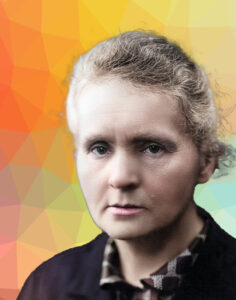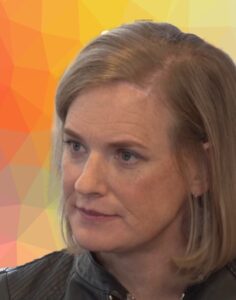Occupation
Polish-French Physicist and Chemist
Birth/Death Dates
November 7, 1867 – July 4, 1934
Summary
Marie Curie was known for her pioneering research on radioactivity and for discovering the elements polonium and radium. She was the first woman to win a Nobel Prize, the first person to win a Nobel Prize twice, and the only person to win a Nobel Prize in two scientific fields. Her husband, Pierre Curie, was a co-winner of her first Nobel Prize, making them the first-ever married couple to win the Nobel Prize. Born in Warsaw, in what was then the Kingdom of Poland, part of the Russian Empire, Curie named the first chemical element she discovered “polonium” after her native country, Poland. In 1906, she became the first woman to become a professor at the University of Paris.
Educational Background
University of Paris, PhD (Doctorate)
Struggles this Innovator Overcame
To attain her scientific achievements, Curie had to overcome barriers in her native and adoptive countries that were placed in her way because she was a woman. For example, in June 1903, Curie and her husband were invited to the Royal Institution in London to give a speech on radioactivity. However, because she was a woman, she was prevented from speaking. Her husband, Pierre Curie, had to give the speech alone.
Problems this Innovator Solved
The essential discovery of two elements – polonium and radium.
In July 1898, Curie and her husband published a joint paper announcing the existence of an element they named “polonium.” In December 1898, the Curies announced the existence of a second element, which they named “radium.”
How this inventor changed the world (or at least their corner of it)
By the age of 44, Marie Curie had laid out a theory of radioactivity (a term she coined), techniques for isolating radioactive isotopes, and the discovery of two elements – polonium and radium.
In December 1903, the Royal Swedish Academy of Sciences awarded Pierre Curie, Marie Curie, and Henri Becquerel the Nobel Prize in Physics “in recognition of the extraordinary services they have rendered (with) their joint research on the radiation phenomena discovered by Professor Henri Becquerel.”
The Royal Swedish Academy of Sciences honored Marie Curie a second time, with the 1911 Nobel Prize in Chemistry “in recognition of her services to the advancement of chemistry (through) the discovery of the elements radium and polonium, by the isolation of radium and the study of the nature and compounds of this remarkable element.”
Lasting changes from this inventor’s work or how they trailblazed
Marie Curie, the first person to develop the Theory of Radioactivity, discovered that we could split an atom. Her discoveries paved the way for other inventions, like the atomic bomb and radiation therapy for cancer treatment.
https://en.wikipedia.org/wiki/Marie_Curie
https://inventionland.com/blog/ten-female-inventors-who-changed-our-lives/






